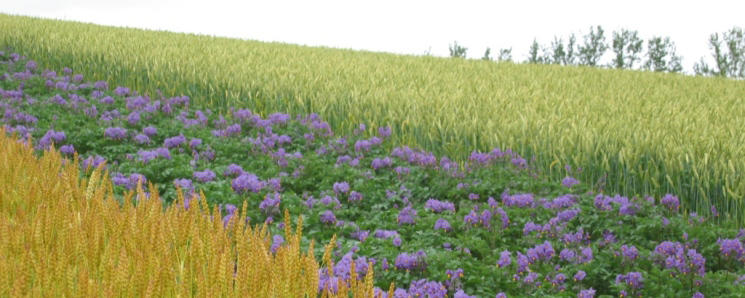
At a Glance
Hokkaido is the last frontier of Japan, a region richly endowed with untouched nature. This second largest island in Japan is a center of various agriculture products and fresh seafood, which makes it a popular destination among gourmet tourists.
Activities in Hokkaido
Thanks to the great nature, visitors can enjoy outdoor activities, gourmet feast and relaxation in Hokkaido.
We are happy to arrange unique experiences such as hiking in the mountain paths, canoeing in the stream of marshland, visit a local market with fresh seafood, or just relax in the hot spring.
For more information, please click here.
Highlights
Sapporo
Sapporo, the northern vibrant city, is a popular destination for business and tourism. You will find Sushi bars, Japanese style pubs and late-night ramen noodle shops. If you are not a night bird, take a short tour at Sapporo Beer factory and Yukijirushi (Snow Brand) ice cream plant. At the end of both tours, you can taste fresh beer or dairy products.
The busiest tourist season is February when Sapporo Snow Festival is held. In the heart of the city, you will find huge snow statues that have made Sapporo Snow Festival the most popular winter festival in Japan. About two million people visit the festival each year. Please make sure your accommodation is booked in advance.
Otaru, a port town easily accesible from Sapporo, is famous for sushi restaurant.
Northern Hokkaido
Northern Hokkaido is the lesser-visited region compared to other areas. However, there are interesting places to visit. Wakkanai City is the northernmost city of Japan. Only a fifteen-minute drive takes you to the northernmost tip of Japan, Cape Soya. This area is exposed to hash climate throughout the year, but if you are lucky, you may be able to see Karafuto Island (Sakhalin) of Russia. The cape is well known for producing "Soya Beef." They were grown on the meadow hills with marine minerals in harsh climates. You will be able to enjoy Soya beef at some restaurants in the city.
If you can afford to spend time in Rebun Island and Rishiri Island, it will be a great memory. On Rebun Island, hiking along the cliffs, forests, and capes is famous, especially the " Hiking Route of Love & Romance" which takes eight hours. It is quite popular for its beautiful flora, however, please be prepared for the mountain equipments.
Climbing Mount Rishiri is quite tough, not appropriate for beginners. It is called "Rishiri Fuji" since the shape of the mountain looks like Mt. Fuji. From the top of the mountain, Hokkaido's main island can be seen. If you are not a serious trekker, just visit Sarobetsu wetland, within one hour drive from Wakkanai city, you will enjoy a majestic sunset with Rishiri.
In Northern Hokkaido, do not miss to have sea urchin, octopus and scallops. You will find its taste being no match for even the finest sushi restaurants in Tokyo.
Central Hokkaido
Central Hokkaido is a major production area of vegetables such as potatoes, Azuki red beans, corns, rice and so on. Furano and Biei area is famous for the colorful carpets of winding hills. Go on a cycling tour to some local photo museums and take a rest at potato restaurants. You will also find Mt. Taisetsu located in this region. Famous for alpine flora in summer and coloured leaves in autumn, the scenic mountain is popular among hardy hikers. After a long hike, you can enjoy relaxing in an open-aired hot springs. In Asahikawa City, you should not miss Asahiyama Zoo, the hottest tourist spot in Hokkaido. It established the record of more than three million visitors in 2006 for the unique exhibitions. Penguins are walking in the zoo with the visitors, and the animals are raised in an attempt to keep them in a natural environment as much as possible.
Southern Hokkaido
Niseko is one of the most popular resorts in Hokkaido. In recent years, many foreign tourists, especially Australians are visiting for skiing. Niseko is a favorite destination among skiers from Southern Hemisphere. The area has been growing with new restaurants and accommodations with English speaking environment, thanks to Australian's investments.
If you are not interested in outdoor sports, visit Hakodate to see Goryokaku Castle in Tokugawa Samurai era, enjoy fresh sushi at the Hakodate Morning Market, or take a street car to the Yunokawa Onsen hot spring area. The city of Hakodate is famous for its night view, too.
Eastern Hokkaido
In Eastern Hokkaido you will find majestic mountain ranges, breathtaking waters, virgin forests and an abundance of wildlife. In 2006, Shiretoko area was designated as the World Natural Heritage site for its undeveloped wilderness. In the summer, please watch out for grizzly bears especially around Shiretoko Goko (five lakes). In the winter, you will enjoy hot springs looking over ice drifts from Siberia. The area's severe climate is perfect for outdoor activities, such as cross-country skiing, sea kayaking, hiking, etc.
Kushiro Marshland, the great paradise for wild birds, is registered under the Ramsar Convention. You will easily find our national bird, Japanese red-crowned cranes flying around. In the summer time, you might see a baby crane fed by the mother in its nest. If you would like to see many couples at once, visit their sanctuary in Tsurui Mura Village during the winter. Located in Teshikaga, Lake Mashu is known as the lake having the clearest water in Japan. The lake reflects the color of the blue sky, which is called "Mashu Blue". In early morning from June to October, a sea of clouds can be seen here when the weather permits. In the winter, Teshikaga gets decorated with snow, making the awe-inspiring sceneries and the canoe at Kushiro River is one of the best ways to enjoy the mysterious atmosphere. For more information about Teshikaga, please click HERE.
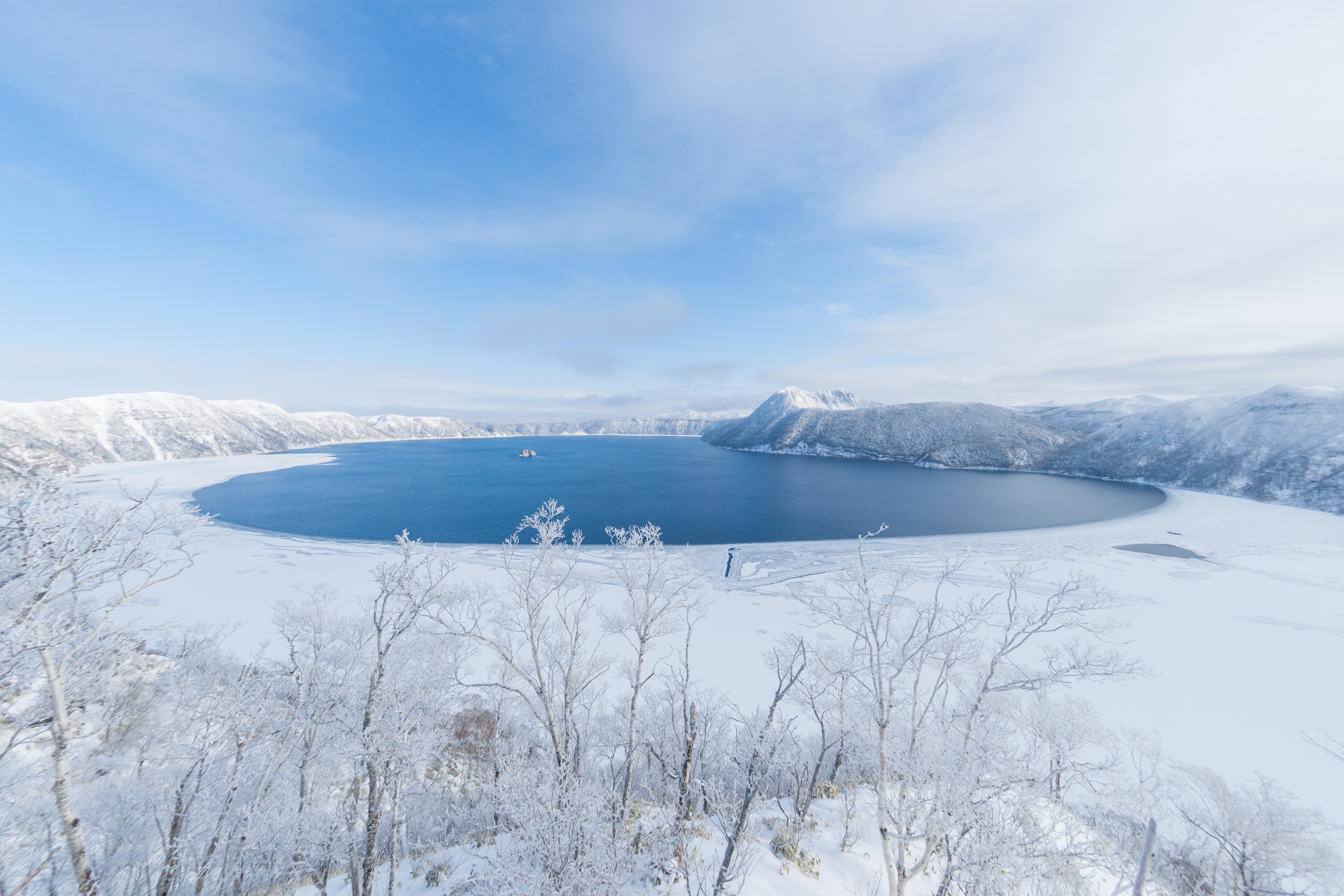
Seasons to visit
Traveling from late spring to Summer (May, June, July, August) is recommended if you would like to see Hokkaido around. The weather in the summer is relatively stable, except some rainy weeks in July. Typhoon does not reach Hokkaido so often. Even in the summertime, it gets cold on the mountainside, so please bring your windproof jacket. In early October the leaves start to color, and the temperature sometimes drops below zero degrees Celsius in the morning.
In the winter, the temperature often drops to minus thirty degrees Celsius in Hokkaido. Please bring your snow boots, winter jackets, woven hat, and gloves. In some areas, you will often encounter blizzards. The winter in Hokkaido is very severe, so please prepare yourself as if you are to go to Alaska or Canada. However, if you would like to have a true experience in Hokkaido, visit in February.
Recommended Accommodations
These are some luxurious ryokans (Japanese style inns) that we recommend. We can book other ryokans or international hotels depending on your travel plan or budget. Please contact us by E-mail (commentsmtj@michitravel.com) or phone (81-3-5213-5040).

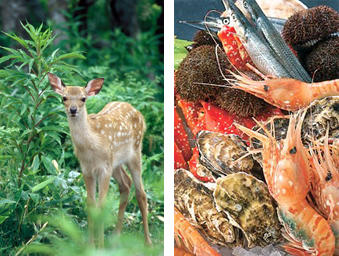
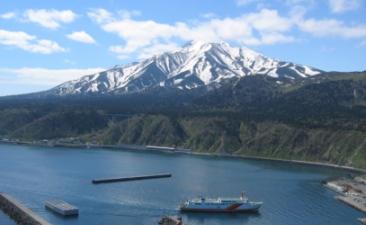
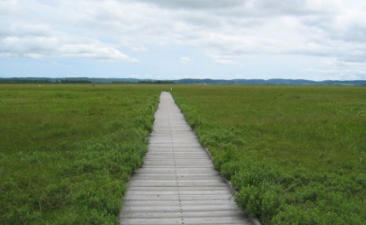
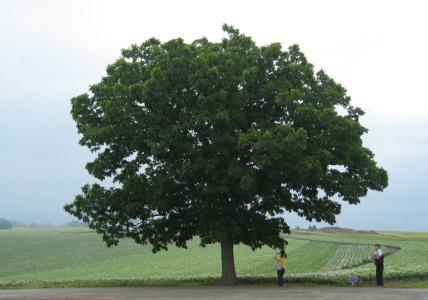

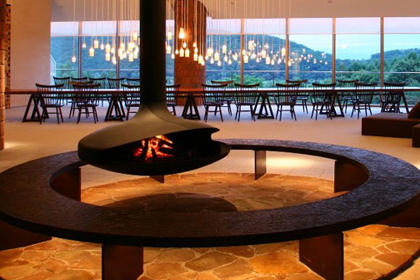 Furano Hotel (Furano)
Furano Hotel (Furano)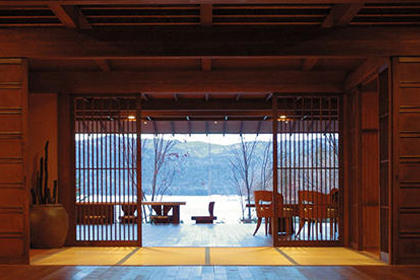 Hinanoza (Lake Akan)
Hinanoza (Lake Akan)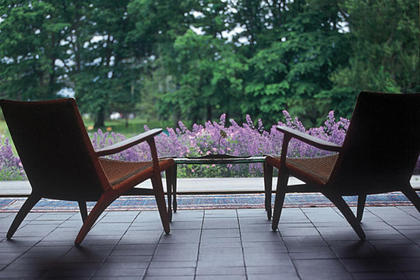 Sanyoan (Tokachi)
Sanyoan (Tokachi)